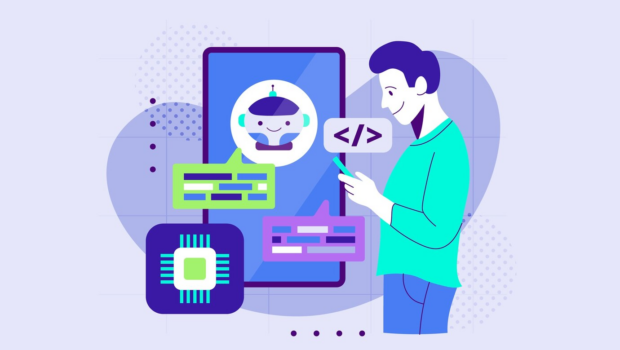NLP-Powered Automated Texting: Advancing Conversational Agents and Virtual Assistants
In our tech-driven world, how we communicate is changing. Conversational agents and virtual assistants are transforming how we interact with technology and businesses. At the heart of this change is Natural Language Processing (NLP), a part of artificial intelligence that helps computers understand and respond to human language. In this article, we’ll explore how NLP-powered automated texting is making conversations with technology more natural and exciting, shaping a future where chatting with machines is the norm.
Understanding NLP and Its Significance
Natural Language Processing, commonly referred to as NLP, is a branch of artificial intelligence (AI) that focuses on bridging the gap between human language and computers. It’s like teaching machines to speak our language. With NLP, computers can understand, interpret, and generate human language in a way that makes sense.
Imagine you’re texting a chatbot, and it understands your questions and responds like a human would. That’s NLP at work. It’s the technology behind the scenes that enables machines to comprehend your words and provide meaningful answers.
NLP plays a crucial role in automating text-based conversations, such as those you have with chatbots or virtual assistants. When you send a message to a chatbot, NLP helps it figure out what you’re asking and how to respond. For instance, if you ask a travel chatbot, “What’s the weather like in Paris next week?”, NLP helps the chatbot recognize that you’re inquiring about the weather forecast for a specific location and time. It then fetches the relevant information and provides you with a tailored response.
Real-World Applications of NLP in Various Industries
NLP isn’t just a cool technology; it’s also incredibly practical. It finds applications in a wide range of industries, making our lives more convenient and efficient:
- Healthcare: In the medical field, NLP is used to extract information from patient records, assist with diagnoses, and even transcribe doctor-patient conversations.
- Customer Support: Many companies use NLP-powered chatbots to provide instant customer support, answering questions and resolving issues 24/7.
- Finance: In the financial sector, NLP helps analyze news articles, social media, and financial reports to predict market trends and assess investment risks.
- Language Translation: Services like Google Translate rely heavily on NLP to convert text from one language to another while preserving context.
- Voice Assistants: Voice-activated assistants like Siri and Alexa use NLP to understand and respond to spoken commands, making them handy in homes and cars.
According to a recent study Gartner predicts that by 2025, 80% of customer service and support organizations will be applying generative AI technology in some form to improve agent productivity and customer experience (CX)., demonstrating the growing significance of NLP in enhancing customer interactions and support services. In essence, NLP is the technology that allows machines to understand what we say and respond intelligently. It’s a powerful tool that’s changing the way we interact with technology and making our lives more connected and efficient.
How does NLP Technology Enhance the Capabilities of Conversational Agents?
Natural Language Processing (NLP) technology acts as the powerhouse that empowers conversational agents with enhanced capabilities, resulting in more effective and user-friendly interactions. NLP achieves this by enabling agents to:
- Understanding Context: With NLP, chatbots and virtual assistants have the ability to grasp the context within a conversation. Whether you’re asking a question or making a statement, these agents can recall prior parts of the conversation and respond in a manner that aligns with the ongoing dialogue, creating an experience akin to engaging with a human interlocutor.
- Intent Recognition: NLP assists agents in identifying your intent behind a query. Be it seeking information, making a reservation, or resolving an issue, NLP discerns your objectives, ensuring that the agents provide precise and contextually pertinent responses.
- Natural Language Responses: Through NLP, conversational agents can craft responses that mirror the natural flow of human conversation. They adeptly employ proper grammar, adapt to your unique communication style, and deliver answers that feel far from robotic, establishing a more engaging and human-like interaction.
- Learning and Adaptation: NLP-driven agents are dynamic and continuously evolving. They learn from past user interactions, allowing them to improve over time. Should users offer corrections or feedback, these agents utilize that valuable information to refine their responses, enhancing their performance and relevance in future interactions.
Use Cases and benefits of NLP-Powered Conversational Agents
NLP-powered chatbots and virtual assistants have found their utility across a multitude of industries, each reaping unique benefits from their capabilities. In customer service, these intelligent agents have become indispensable, offering round-the-clock support with quick and accurate responses, enhancing customer satisfaction. E-commerce platforms leverage NLP-powered virtual shopping assistants to aid users in product searches, comparisons, and informed decision-making, ultimately driving higher sales and fostering customer loyalty. In healthcare, virtual assistants equipped with NLP assist patients by providing medical information, managing appointments, and ensuring medication adherence, thereby improving overall patient engagement and health outcomes.
The financial sector employs NLP for the analysis of vast datasets, including news articles, social media, and financial reports, enabling better prediction of market trends and informed investment decisions. NLP technology also plays a vital role in language translation services, facilitating real-time communication between speakers of different languages. Moreover, voice-activated virtual assistants like Siri and Alexa are ubiquitous in homes and cars, powered by NLP to understand spoken commands and answer queries, enhancing user convenience and interaction. These diverse applications showcase the versatility and impact of NLP-powered conversational agents across numerous fields.
Advantages of NLP-powered conversational agents
The advantages of NLP-powered conversational agents are undeniably substantial. First and foremost, they significantly enhance the user experience. By making interactions more natural, conversational, and user-friendly, these agents lead to higher user satisfaction. Users no longer feel like they are interacting with machines; instead, they experience a more human-like exchange, which fosters engagement and trust.
Moreover, the efficiency gains are remarkable. Automated systems can handle a large volume of inquiries simultaneously, ensuring prompt responses and reducing customer wait times. This is especially critical in customer service, where long queues and delays can lead to frustration. NLP-powered agents address these issues effectively. these agents are not static; they are dynamic learners. NLP enables them to continuously learn from user interactions.
If users correct them or provide feedback, these agents can incorporate that information into their responses, ultimately improving their performance and accuracy over time. This adaptability ensures that the agents stay relevant and effective in an ever-changing landscape. Lastly, the scalability offered by these agents is a game-changer for businesses. They can scale their customer support and engagement efforts without the need to proportionally increase human resources, resulting in cost savings and greater efficiency. In conclusion, NLP-powered conversational agents provide a multifaceted set of benefits, making them a cornerstone of modern technology and customer service.
What advanced NLP techniques are used in automated texting, and how do they function?
Advanced Natural Language Processing (NLP) techniques have revolutionized the landscape of automated texting, taking user interactions to new heights of sophistication and personalization. In this realm, NLP is not merely a tool but a powerhouse of capabilities, bringing a wealth of advanced techniques that enhance the quality and effectiveness of text-based conversations.
One of the standout techniques is Sentiment Analysis, a game-changer in understanding user emotions. NLP can now gauge the emotional tone of user messages, allowing conversational agents to respond empathetically. This is particularly valuable in fields such as customer support and social media interactions. By recognizing and responding to user sentiments, agents can address concerns effectively and enhance user satisfaction.
Intent Recognition is another remarkable aspect of advanced NLP. It empowers automated systems to understand not just what users say but what they intend to achieve. Even when the phrasing varies, NLP can decipher the user’s underlying intent, ensuring that responses are accurate and contextually appropriate. This level of understanding is instrumental in delivering meaningful and relevant interactions.
Multilingual Support and Translation capabilities in NLP break down global communication barriers. These advanced techniques enable automated systems to communicate with users in their preferred language. Furthermore, they facilitate real-time language translation, ensuring that language is no longer a barrier to effective communication. This is a game-changer for businesses and organizations with global reach.
Personalization and User Profiling powered by NLP bring tailored experiences to the forefront. NLP can analyze previous interactions and user preferences to offer personalized recommendations and responses. Users receive information and assistance that aligns with their individual needs, fostering a sense of engagement and satisfaction.
These advanced NLP techniques are not just buzzwords; they are transformative tools that elevate automated texting to new heights. They bring a level of understanding, personalization, and global connectivity that was previously unimaginable. As NLP continues to evolve, so too will the capabilities and possibilities of automated text-based interactions, ushering in an era of communication that is more natural, personalized, and effective than ever before.
Challenges and Ethical Considerations
While NLP-powered automated texting offers a plethora of benefits, it is not without its challenges and ethical considerations. In this section, we delve into these crucial aspects that must be carefully addressed.
- Addressing Bias and Fairness in NLP-Powered Automated Texting
One of the foremost challenges in the NLP landscape is the presence of bias in language models. NLP models are typically trained on vast datasets, and if these datasets contain biases, the models may inadvertently perpetuate them. This raises concerns related to fairness and equity, especially in areas like hiring, customer service, and decision-making. The industry is actively working to mitigate bias by enhancing data quality, developing fairness metrics, and employing debiasing techniques to ensure that NLP systems provide equitable responses and solutions.
- Privacy Concerns and Data Security in Text-Based Interactions
As automated texting systems engage with users, they handle a wealth of sensitive information. This includes personal data, health records, financial details, and more. Ensuring robust data security and respecting user privacy are non-negotiable imperatives. Developers and organizations must implement stringent encryption protocols, secure storage practices, and compliance with data protection regulations like GDPR (General Data Protection Regulation). Users must trust that their data is handled with the utmost care and security.
- Ensuring Transparency and Accountability in Conversational AI Systems
The inner workings of NLP-powered automated texting systems must be transparent and accountable. Users have the right to understand how these systems make decisions and why they respond in certain ways. Transparency also helps in addressing concerns related to biases and fairness. Developers must work on providing clear explanations for the actions of these systems and establish mechanisms for users to seek recourse in the event of errors or misinterpretations. Accountability ensures that developers are held responsible for any ethical or legal issues that may arise from automated text interactions.
Predictions for the Future of NLP in Automated Texting
The future of Natural Language Processing (NLP) in automated texting is poised for remarkable advancements. NLP-powered systems will become even more conversational, making interactions with machines indistinguishable from human conversations. Multilingual capabilities will improve, breaking down language barriers for global connectivity.
Voice and text interactions will seamlessly integrate, offering users the flexibility to communicate in their preferred mode. Quantum computing will supercharge NLP, enabling previously unimaginable language understanding and generation. Edge AI will reduce latency, making real-time interactions more responsive for applications like autonomous vehicles and healthcare.
NLP will unlock enhanced personalization by analyzing user behavior and preferences, offering tailored recommendations and responses. In essence, the future of NLP in automated texting promises a world where technology interacts with us in a more natural, efficient, and personalized manner, revolutionizing the way we communicate and engage with machines.
Conclusion
In summary, NLP-powered automated texting is a game-changer. It makes interactions more human-like, efficient, and scalable. Ongoing research and development are crucial to address challenges and unlock its full potential. NLP’s future promises seamless communication, breaking language barriers, and offering personalized experiences across industries. It’s a transformative force that’s here to stay, shaping the future of how we interact with technology and each other.
Cover Image by Freepik
















